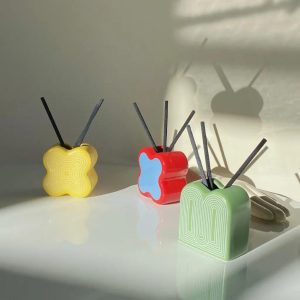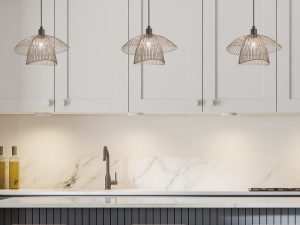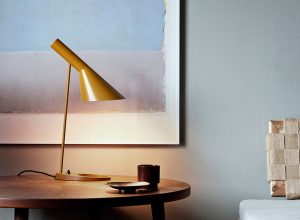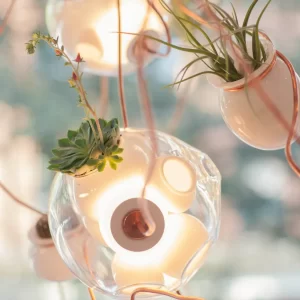Suspended ceiling lights Fasuhouse, also known as drop ceiling lights or false ceiling lights, are a type of lighting fixture that is installed below the actual ceiling. These lights are typically mounted on a grid system that is suspended from the ceiling, creating a gap between the two surfaces. This gap allows for the installation of various lighting fixtures, providing both functional and decorative lighting to a space.
The concept of suspended ceiling lights dates back to ancient times when people used candles and oil lamps to illuminate their homes. However, the modern version of suspended ceiling lights emerged in the mid-20th century when architects and designers began exploring new ways to enhance lighting in interior spaces. Today, suspended ceiling lights have become a popular choice for both residential and commercial settings due to their versatility and aesthetic appeal.
Benefits of Using Suspended Ceiling Lights
1. Energy efficiency: One of the main benefits of using suspended ceiling lights is their energy efficiency. These lights are designed to provide ample illumination while consuming less energy compared to traditional lighting fixtures. The gap between the suspended ceiling and the actual ceiling allows for better distribution of light, reducing the need for additional fixtures.
2. Aesthetically pleasing: Suspended ceiling lights can greatly enhance the overall aesthetics of a space. They come in a wide range of designs, shapes, and sizes, allowing you to choose a style that complements your interior decor. Whether you prefer a sleek and modern look or a more traditional and ornate design, there is a suspended ceiling light that will suit your taste.
3. Versatility in design: Another advantage of suspended ceiling lights is their versatility in design. They can be used to create various lighting effects, such as ambient lighting, task lighting, or accent lighting. Additionally, these lights can be easily adjusted or repositioned to suit different needs or preferences.
4. Improved lighting quality: Suspended ceiling lights provide a more even and uniform distribution of light compared to other types of lighting fixtures. The gap between the suspended ceiling and the actual ceiling allows for better diffusion of light, reducing shadows and glare. This results in improved lighting quality and a more comfortable and visually appealing environment.
Types of Suspended Ceiling Lights
1. Recessed lights: Recessed lights, also known as can lights or downlights, are a popular choice for suspended ceiling lighting. These lights are installed flush with the ceiling, creating a seamless and clean look. Recessed lights are versatile and can be used for general lighting or to highlight specific areas or objects in a space.
2. Surface-mounted lights: Surface-mounted lights are another common type of suspended ceiling lights. These lights are mounted directly onto the surface of the suspended ceiling grid, providing a more prominent and decorative lighting option. Surface-mounted lights come in various shapes and sizes, allowing for customization to suit different design preferences.
3. Pendant lights: Pendant lights are suspended from the ceiling using a cord, chain, or rod. These lights hang down from the suspended ceiling, creating a focal point and adding visual interest to a space. Pendant lights come in a wide range of styles, from minimalist and modern to ornate and traditional.
4. Chandeliers: Chandeliers are a grand and elegant option for suspended ceiling lighting. These lights feature multiple arms or branches that hold individual light bulbs. Chandeliers are often used in large spaces or rooms with high ceilings to create a dramatic and luxurious ambiance.
Choosing the Right Suspended Ceiling Light for Your Space
When choosing a suspended ceiling light for your space, there are several factors to consider:
1. Consider the size of the room: The size of the room will determine the size and number of suspended ceiling lights needed. A larger room may require multiple fixtures or larger-sized fixtures to provide adequate lighting.
2. Determine the purpose of the room: The purpose of the room will also influence the type of suspended ceiling light you choose. For example, a kitchen may benefit from bright and task-oriented lighting, while a bedroom may require softer and more ambient lighting.
3. Choose a style that complements the room’s decor: It is important to choose a suspended ceiling light that complements the overall decor of the room. Consider the existing color scheme, furniture style, and architectural features when selecting a light fixture. This will ensure a cohesive and harmonious look in the space.
Installation of Suspended Ceiling Lights
When it comes to the installation of suspended ceiling lights, you have two options: hiring a professional or doing it yourself (DIY). Here are some considerations for each option:
1. Hiring a professional: If you are not confident in your DIY skills or if you have a complex lighting design, it may be best to hire a professional electrician or lighting specialist to install your suspended ceiling lights. They have the knowledge and experience to ensure proper installation and can provide guidance on the best placement and wiring options.
2. DIY installation: If you are comfortable with basic electrical work and have some experience with DIY projects, you can install suspended ceiling lights yourself. However, it is important to follow safety guidelines and local building codes. Make sure to turn off the power before starting any electrical work and use proper tools and equipment.
3. Tools and materials needed for installation: The tools and materials needed for installing suspended ceiling lights will depend on the specific type of light fixture and the complexity of the installation. Generally, you will need a ladder, wire cutters, wire strippers, electrical tape, screws or clips for mounting, and a voltage tester.
4. Step-by-step installation process: The installation process will vary depending on the type of suspended ceiling light you choose. However, here is a general step-by-step guide:
– Turn off the power to the room at the circuit breaker.
– Determine the location and layout of the light fixtures.
– Install the mounting brackets or clips onto the suspended ceiling grid.
– Connect the wiring from the light fixture to the electrical supply.
– Secure the light fixture onto the mounting brackets or clips.
– Turn on the power and test the light fixture.
Maintenance of Suspended Ceiling Lights

Proper maintenance is essential to ensure that your suspended ceiling lights continue to function properly and look their best. Here are some tips for maintaining your suspended ceiling lights:
1. Cleaning tips and tricks: Regular cleaning is important to remove dust, dirt, and grime that can accumulate on the light fixtures. Use a soft cloth or duster to gently wipe down the surface of the lights. For more stubborn stains or dirt, you can use a mild soap solution and a soft brush. Avoid using abrasive cleaners or harsh chemicals, as they can damage the finish of the light fixtures.
2. Replacing bulbs and fixtures: Over time, bulbs may burn out or fixtures may become damaged or outdated. It is important to replace these components as needed to maintain optimal lighting performance. Follow the manufacturer’s instructions for replacing bulbs and fixtures, and make sure to turn off the power before doing any electrical work.
3. Troubleshooting common issues: If you experience any issues with your suspended ceiling lights, such as flickering, dimming, or complete failure, there are a few troubleshooting steps you can take. First, check that the bulbs are properly seated in their sockets and that they are not burnt out. If the issue persists, it may be a wiring or electrical problem that requires professional assistance.
How Suspended Ceiling Lights Enhance Your Space
Suspended ceiling lights have the ability to transform a space and enhance its overall aesthetics. Here are some ways in which these lights can enhance your space:
1. Creating a focal point: Suspended ceiling lights can serve as a focal point in a room, drawing attention and adding visual interest. Whether it’s a statement chandelier in a dining room or a cluster of pendant lights in a living room, these fixtures can become the centerpiece of the space.
2. Adding depth and dimension: By installing suspended ceiling lights, you can create depth and dimension in a room. The interplay of light and shadow can highlight architectural features, such as beams or columns, and create a more dynamic and visually appealing environment.
3. Highlighting architectural features: Suspended ceiling lights can be strategically placed to highlight specific architectural features in a space. For example, recessed lights can be used to accentuate a fireplace or artwork on the wall, while pendant lights can be used to showcase a kitchen island or dining table.
4. Setting the mood: The type of lighting used in a space can greatly influence the mood and ambiance. Suspended ceiling lights offer versatility in creating different lighting effects, from bright and energetic to soft and romantic. By adjusting the intensity and color temperature of the lights, you can set the desired mood for any occasion.
Creative Ways to Use Suspended Ceiling Lights
Suspended ceiling lights offer endless possibilities for creative lighting designs. Here are some ideas to inspire you:
1. Creating a starry night effect: Install recessed lights with small openings in the suspended ceiling to create a starry night effect. This can be particularly effective in bedrooms or home theaters, where you want to create a calming and immersive atmosphere.
2. Using colored lights for a dramatic effect: Experiment with colored light bulbs or LED strips to create a dramatic effect in your space. For example, use red lights in a dining room to create an intimate and romantic ambiance, or use blue lights in a bathroom for a calming and spa-like feel.
3. Incorporating multiple light fixtures for a layered look: Mix and match different types of suspended ceiling lights to create a layered and visually interesting look. Combine recessed lights with pendant lights or chandeliers to provide both general and task lighting, while adding depth and dimension to the space.
Suspended Ceiling Lights for Different Room Types
Suspended ceiling lights can be used in various room types to enhance the functionality and aesthetics. Here are some ideas for different rooms:
1. Living room: In the living room, consider using a combination of recessed lights and pendant lights to provide both ambient and task lighting. Install recessed lights along the perimeter of the room for general lighting, and hang a pendant light above the coffee table or seating area to create a focal point.
2. Kitchen: The kitchen requires bright and task-oriented lighting for food preparation and cooking. Install recessed lights or surface-mounted lights above the countertops and stove area to provide ample illumination. Consider using under-cabinet lighting to illuminate work surfaces and create a warm and inviting atmosphere.
3. Bedroom: The bedroom is a space where you want to create a calm and relaxing ambiance. Use soft and diffused lighting, such as recessed lights or pendant lights with frosted glass shades, to provide gentle illumination. Consider installing dimmer switches to adjust the intensity of the light according to your mood or activities.
4. Bathroom: In the bathroom, it is important to have bright and even lighting for grooming tasks. Install recessed lights or surface-mounted lights above the vanity area to provide adequate illumination. Consider using sconces or pendant lights on either side of the mirror for additional task lighting.
5. Office: In a home office or workspace, it is important to have bright and focused lighting for productivity. Install recessed lights or track lighting above the work area to provide ample illumination. Consider using a desk lamp or task light for additional focused lighting.
Elevate Your Space with Sleek Suspended Ceiling Lights
Suspended ceiling lights offer a multitude of benefits and design possibilities for any space. From energy efficiency to improved lighting quality, these lights can greatly enhance the functionality and aesthetics of a room. Whether you choose recessed lights, surface-mounted lights, pendant lights, or chandeliers, there is a suspended ceiling light that will suit your needs and preferences.
By considering the size of the room, the purpose of the space, and the overall decor, you can choose the right suspended ceiling light to elevate your space. Whether you hire a professional or opt for a DIY installation, make sure to follow safety guidelines and local building codes. Proper maintenance, such as regular cleaning and bulb replacement, will ensure that your suspended ceiling lights continue to provide optimal lighting performance.
With their ability to create focal points, add depth and dimension, highlight architectural features, and set the mood, suspended ceiling lights are a versatile and stylish choice for any room. Consider incorporating creative lighting designs, such as a starry night effect or colored lights, to add a unique touch to your space. Whether it’s a living room, kitchen, bedroom, bathroom, or office, suspended ceiling lights can transform any room into a well-lit and visually appealing environment.
If you’re looking for more information on suspended ceiling lights, you might find this article on irashaigrill.com interesting. It discusses the benefits of using suspended ceiling lights in commercial spaces and provides tips on how to choose the right type of lighting for your needs.









